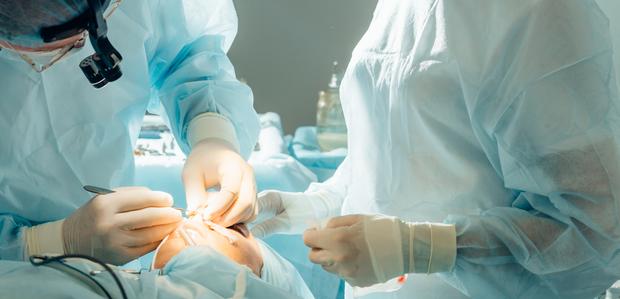Gleneagles HealthCity Chennai: Your Ultimate Destination for Plastic, Cosmetic, and Reconstructive Surgery Excellence

If you're on a quest for the finest plastic, cosmetic, and reconstructive hospital in Chennai, your search ends here at Gleneagles HealthCity Chennai. Renowned as the Center of Excellence for Hand Transplant, this institution stands at the forefront of medical innovation and patient care.
Unveiling the Marvel That is Gleneagles HealthCity Chennai
Situated in the heart of Chennai, Gleneagles HealthCity is a beacon of hope and healing for individuals seeking transformation through plastic, cosmetic, and reconstructive procedures. With a dedicated team of experts, cutting-edge technology, and a commitment to excellence, this hospital has garnered a reputation that speaks volumes.
The Power of Expertise: Leaders in Plastic Surgery
When it comes to plastic surgery, expertise is non-negotiable. At Gleneagles HealthCity Chennai, we pride ourselves on housing some of the most skilled and experienced plastic surgeons in the industry. Our surgeons are not just doctors; they are artists, sculpting and enhancing to perfection.
Beauty Redefined: Cosmetic Surgery Redefined
In a world where beauty standards are constantly evolving, our cosmetic surgery division is here to help you achieve your aesthetic aspirations. From facelifts to rhinoplasty, breast augmentation to liposuction, we offer a comprehensive range of procedures designed to enhance your natural beauty.
Restoring Lives: The Art of Reconstructive Surgery
Accidents, injuries, and congenital conditions can shatter lives, but Gleneagles HealthCity Chennai is here to rebuild them. Our reconstructive surgery department specializes in restoring both form and function, allowing patients to regain their confidence and vitality.
Hand Transplants: A Leap Towards Normalcy
Gleneagles HealthCity Chennai proudly holds the title of the Center of Excellence for Hand Transplant. We understand the immense impact hand injuries or amputations can have on one's life. With our world-class surgeons and state-of-the-art facilities, we offer hope and the possibility of a new beginning.
Our Doctors
View all
Dr Selva Seetharaman S
HOD & Senior Consultant
MBBS, DNB, MS, MCh, MRCS, PGDHHM, PGDMLS
Experience: 15 Years
Plastic,Cosmetic and Reconstructive Surgery
Chennai, Perumbakkam – Sholinganallur
Chennai, Adyar
Dr Arvind Maharaj P M
Consultant
MBBS, MS, MCh
Experience: 10 Years
Plastic,Cosmetic and Reconstructive Surgery
Chennai, Perumbakkam – Sholinganallur
Dr Arun Kumar K
Senior Consultant
MBBS, DNB, MS, MCh
- What types of cosmetic surgery procedures are available at Gleneagles HealthCity Chennai?
Gleneagles HealthCity Chennai offers various cosmetic surgery procedures, including facelifts, rhinoplasty (nose jobs), breast augmentation, liposuction, and more. Each procedure is performed with precision to enhance your natural beauty.
- Can Gleneagles HealthCity Chennai help with reconstructive surgery?
Yes, the hospital has a dedicated department specializing in reconstructive surgery. They are equipped to address issues arising from accidents, injuries, and congenital conditions, aiming to restore both form and function.
- Why is Gleneagles HealthCity Chennai known as the Center of Excellence for Hand Transplant?
Gleneagles HealthCity Chennai has earned this title due to its outstanding expertise and success in performing hand transplant procedures. The hospital is at the forefront of advancements in this field.
- Is Gleneagles HealthCity Chennai the right choice for my surgical needs?
If you are seeking excellence in plastic, cosmetic, or reconstructive surgery, Gleneagles HealthCity Chennai is a premier choice. Our experienced team, state-of-the-art facilities, and commitment to patient care make us a top destination for these services in Chennai.
FAQ
Why Choose Us
-
PATIENT EXPERIENCE
Your care and comfort are our top priorities. We ensure that the patients are well informed prior to every step we take for their benefit and that their queries are effectively answered.
-
LATEST TECHNOLOGIES
Your care and comfort are our top priorities. We ensure that the patients are well informed prior to every step we take for their benefit and that their queries are effectively answered.
-
PROVIDING QUALITY CARE
Strengthening lives through compassionate care, innovative therapies and relentless efforts. It reflects in the DNA of our passionate team of doctors and dedicated clinical staff.







